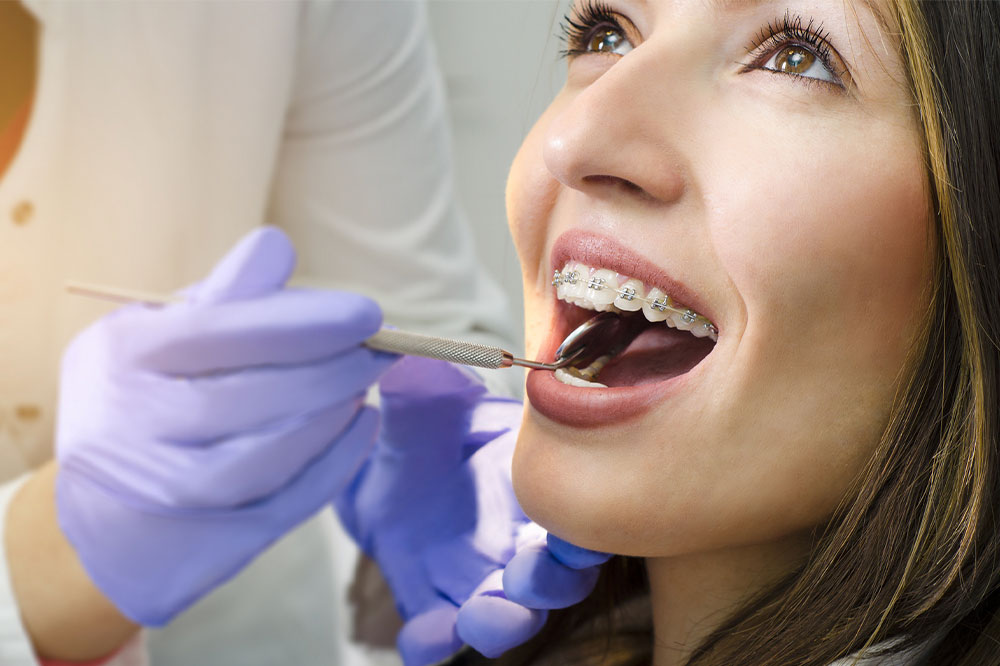
Getting teeth braces – Types, caring tips, and more
Teeth braces are a kind of medical equipment that straighten teeth and address various orthodontic problems, including uneven teeth, crowded teeth, crooked teeth, and malocclusion. Many options exist, including traditional metal braces, ceramic braces, and transparent aligners. Dentists tell you that your smile is more attractive, functional, and healthy with braces. This write-up would help you know various types of braces and take care of dental health after getting teeth braces.
What are tooth braces?
Numerous dental problems, such as crooked, gapped, twisted, or crowded teeth, can be resolved using teeth braces. Children, teens, and adults alike frequently wear braces.
Various benefits of teeth braces
- Make it simpler to brush your teeth
- Assist in avoiding gum disease and cavities
- Fix TMJ (temporomandibular joint) issues
- Restore healthy processes, such as speaking and chewing
- Braces can help your smile look better and operate better
Types of teeth braces
Teeth braces come in various types and designs. The best choice for you will depend on several things, including the nature of your problem, how serious it is, and your particular preferences.
Metal braces
Traditional metal teeth braces may come to mind when you think of braces. Metal braces softly move your teeth over time using stainless steel bands, brackets, and wires.
- Each tooth will have a bracket attached by bonding (glue) by a dentist or orthodontist, which a thin, flexible archwire will cover. Ligatures are tiny elastic bands that retain the wire firmly in place.
- When you grin, your metal braces are apparent. To hide your braces, you might use clear or tooth-colored ligatures. Alternatively, if you’re in a festive mood, you can select ligatures in vibrant colors.
Ceramic braces
Ceramic braces, often clear braces, function similarly to metal braces. The main distinction is that the brackets, wires, and ligatures match your teeth, so they look natural. Ceramic braces are still discernible but less obvious. Ceramic braces have the disadvantage of being more brittle than metal teeth braces, making them more likely to break.
Lingual braces
Traditional braces and lingual braces are comparable. However, they are placed on the rear of your teeth, not the front. Lingual braces are typically chosen by persons who don’t want other people to be able to see they are wearing braces.
Self-ligating braces
Self-ligating braces resemble conventional metal braces in appearance. The primary distinction is that self-ligating braces use an integrated mechanism to hold the archwire in place rather than ligatures (small elastic bands).
Clear aligners
Clear aligners, also called “invisible braces,” are considered an alternative to braces.
- Clear aligners use a set of personalized trays to straighten your teeth in place of braces and wires gradually. You wear each pair of aligner trays for roughly two weeks. Then replace those trays with the following set in the sequence.
- Clear aligners can be taken off, in contrast to metal braces. But each day, you must wear them for at least 22 hours. Only remove your aligners when you eat, drink, or brush your teeth.
How to take care of your teeth before and after getting teeth braces?
Important steps to care before teeth braces
The day you acquire braces begins a journey to better health and a more attractive smile. The following is the care taken before having braces. These consist of the following:
Cleaning of the teeth
The orthodontist will ensure your teeth are thoroughly cleaned and cavity-free before bracing. Make sure you go to the dentist regularly while receiving treatment.
Brushing your teeth thoroughly
Brush and floss your teeth properly before receiving braces; you don’t want braces layered on top of the plaque and lingering germs.
Important steps to care after teeth braces
When you have braces, maintaining good oral hygiene becomes even more important. Your brackets and wires may accumulate plaque and tartar, which can cause cavities and gingivitis. You will receive a comprehensive set of caring tips after getting teeth braces from your dentist or orthodontist, such as:
Use an orthodontic toothbrush to brush your teeth
Plaque can form when the braces’ wire and brackets trap food. Use an orthodontic toothbrush and fluoride toothpaste to brush in the morning. Perform this routine after every meal, after a snack, and before night.
Avoid chewy, hard, and sticky foods
This food might damage or loosen your brackets, lengthening the time it takes to restore your teeth. As a result, you should avoid eating foods like gum, taffy, caramel, pretzels, popcorn kernels, and hard sweets.
After removing your braces, wear retainers
Retainers are made-to-order appliances that hold your teeth in place. They should follow orthodontic treatment to maintain dental alignment and avoid relapse.
Follow-up visits
During these visits, the orthodontist will adjust the wires, tighten or replace them, and monitor the teeth’s alignment. Additionally, they will look for any indications of gingivitis or dental decay.




